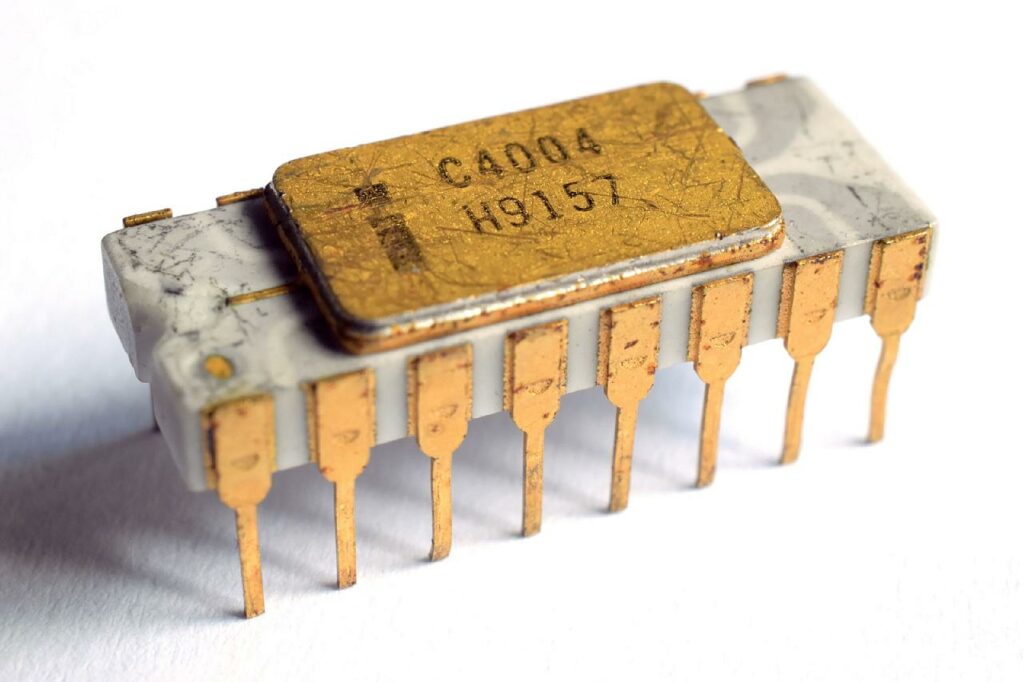
Today (2021-11-15) is the 50th anniversary of the Intel 4004 microprocessor. This featured a 4-bit central processing unit (CPU). It was the first microprocessor to be sold as an electronic component. At the time of its development, Intel considered itself a memory chip manufacturer. At about the same time, three other CPU designs were being developed, but for specific projects. These were: Four-Phase Systems AL1, (1969); American Microsystems MP944 (1970); and Texas Instruments TMS-0100 (1971).
The Intel 4004 project began in 1969, when Japanese adding machine manufacturer Busicom, approached Intel to manufacture a chip it had designed. Intel was a start-up, so small that they didn’t have the staff to design the logic required. Thus, they came with a counter proposal, to build a general purpose computer-on-a-chip and to emulate the calculator architecture using a read-only memory (ROM) byte-code interpreter.
Frederico Faggin (1941 – ) was assigned responsibility for the project. He was able to design a customer-programmable microprocessor. The work included logic design, circuit design, chip layout, tester design and test program development. His initials F.F. were incorporated into the chip design. Assisting in the development process was Masotoshi Shima (1943 – ), a Busicom software and logic designer, but without any chip design experience. The chip was first used in the Busicom 141-PF adding machine.
Faggin is known for several microprocessor inventions. These include the buried contact, and the bootstrap load. He also created the basic methodology for random logic design using silicon gate technology. He was particularly vocal inside Intel in advocating the 4004 as a general purpose microprocessor, with a huge market potential. He subsequently led the design of the 4040, 8008 and 8080 processors.
Faggin was presented with the engineering prototype of their calculator with the first 4004. This was subsequently donated to the Computer History Museum.
Faggin and Ralph Ungermann (1942 – 2015) left Intel in 1974 to start Zilog. Intel’s reaction was to disown Faggin, and to rewrite company history. In particular, it credited more loyal, but less competent, employees, with the 4004 design.

